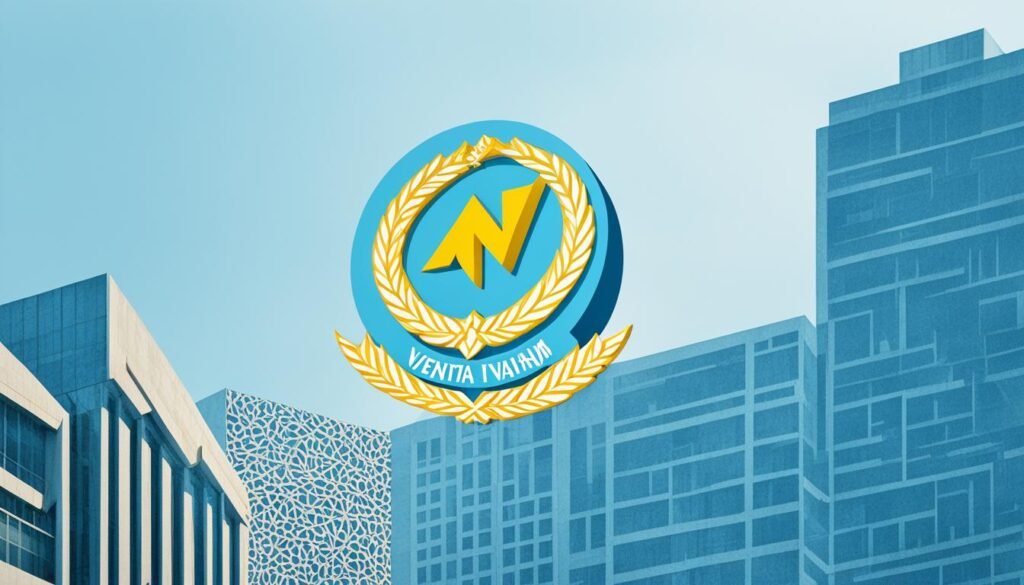Embarking on the journey of investing in Vietnam property unfolds a dynamic landscape where the vibrancy of culture intertwines with burgeoning market opportunities. With Vietnam’s property loan rates becoming increasingly competitive, U.S. investors are poised to unlock the potential of property investment financing in Vietnam. As property finance companies in Vietnam diversify their portfolios, the synergy of mortgage options in Vietnam aligns with global investment strategies such as the 1031 Exchange, which offers tax deferment on reinvestments1. This guide illuminates the spectrum of financing property in Vietnam, ensuring that every step of securing a Vietnam real estate loan is both strategic and compliant with market norms.
Key Takeaways
- Explore emerging markets with competitive Vietnam property loan rates and diverse mortgage options.
- Understand strategic investment benefits, including tax deferments through the 1031 Exchange1.
- Engage with property finance companies in Vietnam for tailored investment solutions.
- Benefit from global valuation methods to assess true asset worth in Vietnam’s property market1.
- Consider innovative financing options such as mezzanine debt for bridging capital requirements1.
- Stay informed about the legal framework for maximizing returns when financing property in Vietnam.
- Leverage cross-cultural real estate expertise to drive operational goals and resolve distressed assets effectively1.
Understanding the Vietnamese Property Market Landscape
As the Vietnamese property market continues to draw global investors, understanding its structure is pivotal for those eyeing property investment opportunities in Vietnamese cities. With foreign direct investment (FDI) stock reaching $274 billion by the end of 20222, Vietnam not only demonstrates robust market trends but also signals a welcoming stance towards significant economic engagement.
Current Trends and Growth in Vietnam’s Real Estate
The growth of Vietnam’s real estate market is an outcome of an influx of FDI, with so-called FDI companies in Vietnam exporting goods worth $274 billion in 2022, accounting for 74% of total goods exports2. This economic landscape represents vibrant property market trends, showcasing the sector’s expansive potential. The commitment to attract $50 billion in new foreign investment by 2030 sets a dynamic future trajectory2.
Legal Framework for Foreign Investors
Familiarizing oneself with the legal framework for foreign investors in Vietnam is essential to navigate the prevailing statutory restrictions. Foreign investment is subject to specific conditions, with 25 business lines closed and 59 others presenting market access requirements2. It is noteworthy that the country’s advancement in the Global Innovation Index, ranking 48 out of 132 in 20222, reflects an environment fostering innovation and investment.
Key Regions and Cities for Property Investment
Identifying key regions for property investment in Vietnam is crucial to capitalizing on regional potential. With urban centers such as Ho Chi Minh City and Hanoi leading in development, they form epicenters for lucrative deals and strategic placements. Moreover, Vietnam’s Gross National Income (GNI) per capita rising to USD 3,590 in 20212 underpins a growing consumer market that supports the residential and commercial real estate segment.
| Indicator | Value |
|---|---|
| Total FDI stock (2022) | $274 billion2 |
| Target FDI by 2030 | $50 billion2 |
| U.S. FDI in Vietnam (2021) | $2,696 million2 |
| FDI companies’ exports (2022) | $274 billion2 |
| GNI per capita (2021) | $3,5902 |
| Corruption Perception Index (2022) | 77th out of 1802 |
Financing Property in Vietnam
Faced with a maturing property market, U.S. investors looking into financing property in Vietnam should take heed of the recent shifts in dynamics, from burgeoning investment opportunities to potential risks. As aggregate residential sales are expected to contract by 15%-20% in 2023 after notable growth the previous year3, it highlights a crucial period of adjustment. Recognizing the nuances of the Vietnamese market is essential, particularly with the banking system’s property exposures holding approximately 25% of total loans3.
Understanding the landscape is critical, particularly as commercial real estate loans account for 7% of the loan books for Vietnamese banks, stirring interest in the resilience of property financing options in Vietnam3. Mortgage loans, while constituting about another 15% of total loans, are expected to remain stalwart, demonstrating a robust borrower repayment capacity3. This suggests that traditional Vietnam property loan options like mortgages may still be a viable route for investors, despite an increasing potential for nonperforming loans (NPLs) to rise to about 4.5% under a worst-case scenario3.
Yet, opportunities for alternative lending are emerging as the property market corrections have introduced refinancing stress for developers. The resulting bond market contraction underscores the need for diverse real estate financing in Vietnam solutions3. Increased private credit interest and the rise of offshore lending—despite constraints such as currency restrictions and limited structured product access—further diversify the options for financing property in Vietnam4.
Challenges, however, are part and parcel of the journey. With Vietnam lacking a well-defined bankruptcy regime, investors face convoluted risk assessments4. Additionally, frequent changes in Vietnamese laws introduce latent regulatory risks, coupled with execution timelines that may stretch further due to longer regulatory processes and borrower inexperience with offshore lenders prohibited from taking direct security over immovable property4. Nevertheless, the recent legal amendments permitting offshore lenders to register pledges over listed shares offer a semblance of progress4.
In light of these considerations, U.S. investors might ponder the stability of the current real estate market—where overleveraged developers face distress, triggering project delays and financing hurdles3. Authorities have responded with policy relaxations and financial sustainability measures, echoing their commitment to ease developer’s capital access and temper market speculations3. The pledge from Vietnam’s finance minister to improve market conditions aligns with the central bank’s economic growth target of 5.5% and the nation’s anticipation of a 17% increase in corporate earnings which, if achieved, could signify revitalizing momentum for the property market5.
The widening spectrum of real estate financing in Vietnam, ranging from mortgages to private credits and offshore lending opportunities, indicates a complex yet ripe terrain for investment. While the banking sector readies itself for potential NPLs and market corrections, the stabilizing efforts by Vietnamese authorities and the resilience of borrowers paint a cautiously optimistic picture for U.S. investors3.
| Financing Type | Share of Vietnamese Banks’ Loan Books | Potential Risks |
|---|---|---|
| Commercial Real Estate Loans | 7% | Potential rise in NPLs to 4.5% |
| Mortgage Loans | 15% | Moderate, given strong repayment capacity |
| Corporate Bond Holdings | 3% | Refinancing stress as market corrects |
| Offshore Lending | Not specified | Regulatory risks and execution delays |
The landscape of property financing options in Vietnam is indeed intricate and evolving. Investors should navigate this terrain with a blend of caution and insight, equipped with a comprehensive understanding of both traditional and pioneering financing avenues34.
Methods of Payment for U.S. Investors
When it comes to purchasing property in Vietnam, U.S. investors have multiple payment options. Understanding the local banking landscape, which includes a considerable portion of Vietnams’s 93 million people using limited banking services, facilitates better navigation through available transaction methods6.
Navigating Letters of Credit and Wire Transfers
For cross-border transactions, letters of credit in Vietnam and wire transfers stand as reliable methods of payment for property purchase in Vietnam. Many U.S. investors find these methods secure, particularly regarding large sums inherent in property transactions. Given that foreign banks can open L/C’s up to 60, 90, or 120 days with generally lower costs than local institutions, they are often preferred6. Vietnam’s integration with international banking standards further reassures investors, especially with U.S. banks like Citibank and JP Morgan Chase finding robust footing within the country6.
Understanding Confirmation of L/Cs and Payment Terms
Parsing through the payment terms for property transactions in Vietnam is crucial. Confirmation of L/Cs is one such term, ensuring the payment is verified and secure. Making use of Vietnam’s 52 representative offices of foreign banks and partnering institutions can expedite and add credibility to this process6. Additionally, it’s worth noting that foreign investors in Vietnam can access authorized banks to purchase foreign currency for these transactions, backed by efforts to maintain stable exchange rates6.
Partnering with Local and Foreign Banks
Creating partnerships with local banks in Vietnam, or with any of the 49 branches of foreign banks, offers advantages such as localized insights and potentially preferable terms given the current direction of financial sector reforms6. These collaborations can facilitate smoother transactions and open up new financing avenues tailored to foreign investors’ needs. Moreover, understanding the local financial milieu, which includes the ongoing enhancements in inspections, supervision of banks, and financial reforms by the State Bank of Vietnam, can empower investors to make informed decisions6.
The landscape of property payments in Vietnam is well-positioned for U.S. investors, especially with the backing of international banking entities and the progressive alignment of Vietnam’s financial regulations with global standards. Managing payment options effectively is a critical competency for successful property transactions and fruitful long-term investment in Vietnam.

The Role of State Bank of Vietnam in Property Financing
The State Bank of Vietnam plays a critical role in shaping the landscape of property financing in the country, exercising regulatory control and enacting policies essential for foreign direct investment (FDI) and economic growth. Offering an investor-friendly setting, Vietnam has seen substantial growth in FDI, with the stock reaching $274 billion by the end of 20222. The country aims to build on this momentum, targeting $50 billion in new foreign investment by 2030, thanks to proactive measures such as removing foreign ownership limits in strategic sectors like electronic payments2.
Property financing regulations in Vietnam are closely supervised by the State Bank, ensuring a structured environment for foreign investors. Importantly, these regulations include identifying prohibited business lines for foreign investment and those with market access restrictions. As of March 2021, there were 25 business lines prohibited and 59 subjected to market access requirements, underscoring the role of the State Bank in guiding FDI flows2.
The influence of the State Bank of Vietnam also extends to the oversight of FDI companies, which in 2022 were responsible for exports worth $274 billion, a significant 74% of the total goods exported from Vietnam2. This underscores the role of property financing in supporting the growth of sectors fundamental to the Vietnamese economy. Furthermore, these companies’ contributions reflect the State Bank’s effective implementation of policies that harmonize with the economic climate.
Aligning with international norms, the State Bank also plays a role in maintaining transparency and anti-corruption measures. This has led to Vietnam’s ranking of 77 out of 180 countries in the Transparency International Corruption Perceptions Index in 2021. Such rankings are vital for fostering an environment that bolsters the confidence of international investors regarding property financing policies in Vietnam2.
Additionally, by navigating Vietnam’s Gross National Income (GNI) per capita, which stood at USD 3,590 in 2021, and aligning the property financing policies in Vietnam accordingly, the State Bank contributes directly to the nation’s economic stability and appeal as an investment destination2.

It’s within this economic framework that the role of the State Bank of Vietnam in property financing becomes particularly pivotal. As overseer of the financial landscape, the central bank’s policies not only regulate but also promote a sustainable and profitable environment for property investments, ensuring that the vibrant real estate market remains accessible and lucrative for U.S. investors and global players alike.
With the State Bank of Vietnam at the helm, the nation’s property financing sphere stands poised to support further economic growth and investment – a promising horizon for those looking to delve into Vietnam’s real estate market.
Exchange Control Mechanisms and Repatriation of Funds
The intricacies of Vietnam exchange control mechanisms and the strategic process behind the repatriation of funds from Vietnam play a crucial role for investors aiming to navigate the dynamic landscape of this vibrant Southeast Asian market. As the government fine-tunes its policies to encourage foreign participation, it’s imperative to understand the practical implications of these regulatory environments on investment fluidity.
Government Policies on Foreign Exchange
Investors considering the government policies on foreign exchange in Vietnam should be well-informed about the current status of the Vietnamese economic market. With a reported FDI stock of $274 billion at the end of 2022, and goods exported by FDI companies amounting to $274 billion in the same year2, the government’s approach to foreign exchange is geared towards attracting and maintaining high levels of foreign investments. To bolster its appeal, Vietnam has also set ambitious goals, aiming to attract $50 billion in new foreign investment by 20302.
Remittances and Hard Currency Transactions
The flow of remittances in Vietnam, along with the protocols for hard currency transactions, are integral segments of the foreign exchange spectrum that U.S. investors must adeptly manage. The U.S. itself had a total of $2.696 million in FDI within Vietnam in 20212, underscoring the significance of comprehensive mechanisms for the transfer of funds. Vietnam’s strategic restrictions ― with 25 business lines off-limits to foreigners and 59 others subject to access requirements2 ― and the periodic adjustment of FOLs are critical determinants of investment health and efficacy.

| Category | Number of Business Lines | Investment Impact |
|---|---|---|
| Prohibited for Foreign Investment | 25 | Off-Limits for International Capital |
| Subjected to Market Access | 59 | Regulated Entry and Operational Conditions |
Indeed, Vietnam’s commitment to economic development, evidenced by the World Bank’s report of a GNI per capita of USD 3,590 in 20212, reflects a maturing market that acknowledges the critical balance of capital inflow and national control. Investors and stakeholders are recommended to keep abreast of policy changes that can affect the landscape of foreign revenue moves within and out of Vietnam.
Alternative Financing and Non-Traditional Mortgage Options
As U.S. investors turn their attention to the burgeoning Vietnamese market, they encounter a landscape rich with opportunities, particularly in the realm of property investment. Delving into the world of alternative financing options in Vietnam reveals a variety of innovative pathways outside traditional mortgage structures.

Vietnam’s impressive growth in renewable energy projects, with nearly 20GW of mainly solar projects constructed from 2016 to 2021, underscores the momentum of its development sector7. Investors eying this expansion can tap into non-traditional mortgage options in Vietnam, which offer flexible terms in an economy aiming for renewable sources, excluding hydro, to make up roughly 35% of its total generation capacity by 20307.
Exploring Company Overseas Investment Financing
Company overseas investment financing in Vietnam offers a compelling avenue for resource allocation, with projects typically involving a sponsor contribution of about 30% of total project investment costs as equity7. The conventional practices of non-recourse and limited-recourse financing are particularly prevalent due to the unique country risk issues investors face here7. Moreover, multilateral and export credit agencies contribute significantly by providing subsidized financing or guarantees, hence improving the bankability of projects7.
Innovative Solutions with Homebase’s Buy with Installment Plan
Among the plethora of innovative financing solutions in Vietnam, Homebase’s Buy with Installment plan stands out as a distinct offering tailored for property buyers. This plan presents a modernized approach to acquiring property, bypassing traditional lending constraints and thus commemorates the ingenuity of Vietnamese financing strategies.
The intricate web of financial instruments also includes insurance packages that hedge against political risk—covering daunting scenarios like expropriation and barriers to arbitral award enforcement7. Furthermore, the engagement and commitment of pivotal third parties such as EPC contractors, fuel suppliers, and offtakers are instrumental in strengthening credit support for property projects in Vietnam7.
As we witness the development of 22,400 MW of LNG-to-power projects slated for completion by 2030, representing about a quarter of Vietnam’s current installed generation capacity7, the allure of alternative financing becomes ever more pronounced. This burgeoning sector, therefore, demands the attention of U.S. investors seeking to venture beyond the frontiers of conventional financing methods.
Conclusion
As we wrap up this comprehensive U.S. investor’s guide to property financing in Vietnam, it’s clear that the journey through the bustling markets and regulatory landscapes has been insightful. Determining the optimal path for financing property in Vietnam requires thorough understanding and strategic planning. From legal frameworks to innovative financing methods, U.S. investors are now equipped with the knowledge to tactfully navigate the Vietnamese property investment scene.
The landscape for property investment in Vietnam offers a plethora of opportunities that when leveraged with suitable financing options for U.S. investors in Vietnam, can turn aspirations into tangible success. Throughout this guide, we dissected the nuances of the local financial climate, highlighting the benefits of leveraging loans that respect the intricacies of international investments and regional financial regulations.
In conclusion, armed with the insights from this guide and a deeper understanding of the financial guarantees like the Department of Veterans Affairs backing, where VA can ensure up to 50 percent of a home loan up to $45,0008, and for certain loans between $45,000 and $144,000, providing a guaranty amount that can be as substantial as $36,0008, U.S. investors can confidently approach the Vietnamese market. Remember, the art of property financing in an overseas market such as Vietnam is nuanced but achievable with the right resources and strategic alliances.
FAQ
What is the current state of the Vietnamese property market?
The Vietnamese property market is experiencing significant growth and offers lucrative investment opportunities. The market is seeing increased demand and rising property prices across various regions and cities in Vietnam.
What is the legal framework for foreign investors in Vietnam?
Foreign investors in Vietnam need to be aware of the regulations and restrictions set by the government. They are allowed to purchase certain types of properties, but there may be limitations on land ownership and other requirements to comply with.
Which regions and cities in Vietnam offer attractive property investment opportunities?
There are several regions and cities in Vietnam that present great potential for property investment, including Ho Chi Minh City, Hanoi, Da Nang, Nha Trang, and Phu Quoc. These areas have strong economic growth and thriving real estate markets.
What financing options are available for U.S. investors looking to purchase property in Vietnam?
U.S. investors can explore traditional financing methods such as mortgages and loans from Vietnamese banks. They can also consider alternative financing options such as partnering with property finance companies that specialize in international investments.
How can U.S. investors navigate the methods of payment when purchasing property in Vietnam?
U.S. investors can use letters of credit and wire transfers for payment transactions in Vietnam. It is important to understand the process of using these payment methods and confirm L/Cs. Partnering with local and foreign banks can also simplify the payment process.
What is the role of the State Bank of Vietnam in property financing?
The State Bank of Vietnam plays a key role in regulating property financing in Vietnam. It sets the policies and regulations that govern property financing and ensures the stability of the financial sector.
What are the exchange control mechanisms in Vietnam, and how can U.S. investors repatriate funds?
Vietnam has certain government policies on foreign exchange, including restrictions and regulations. U.S. investors need to understand the process of repatriating funds and any considerations or requirements related to remittances and hard currency transactions.
Are there alternative financing options and non-traditional mortgage options available to U.S. investors in Vietnam?
Yes, U.S. investors can explore alternative financing options such as partnering with companies for overseas investment financing. There are also innovative solutions available, such as Homebase’s Buy with Installment plan, which cater specifically to the needs of U.S. investors in Vietnam.
Source Links
- https://www.us.jll.com/en/invest-in-real-estate
- https://www.state.gov/reports/2023-investment-climate-statements/vietnam/
- https://www.spglobal.com/ratings/en/research/articles/230725-vietnam-s-property-strain-could-spill-over-to-banks-12803520
- https://www.mayerbrown.com/en/insights/publications/2023/02/primer-for-private-credit-in-vietnam-top-10-issues
- https://www.velotrade.com/blog/vietnam-credit-crunch-and-financing/
- https://www.trade.gov/country-commercial-guides/vietnam-trade-financing
- https://www.allens.com.au/globalassets/pdfs/insights/asia/allens-vietnam-project-financing-guide.pdf
- https://benefits.va.gov/homeloans/documents/docs/vap_26-4_online_version.pdf
Comments